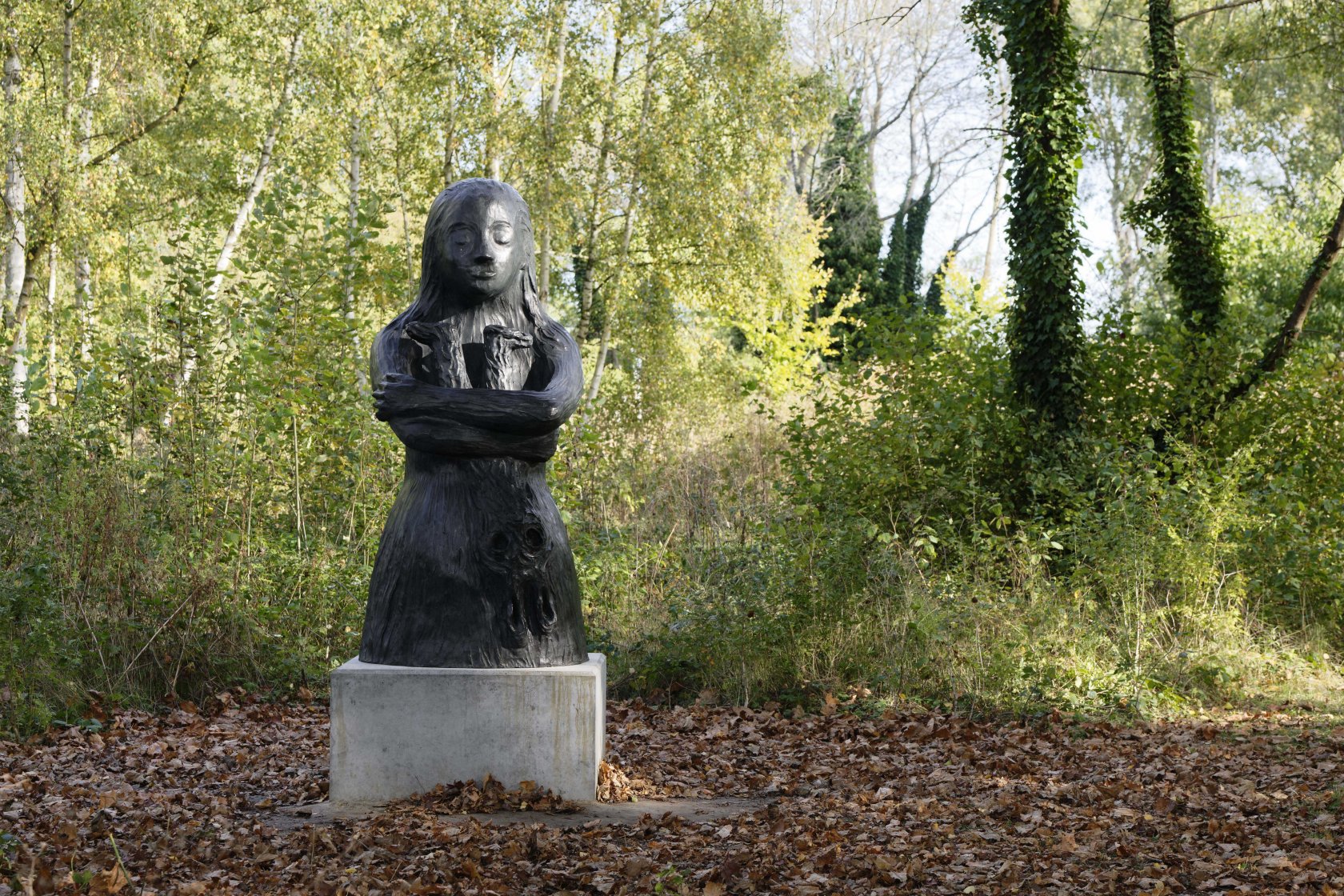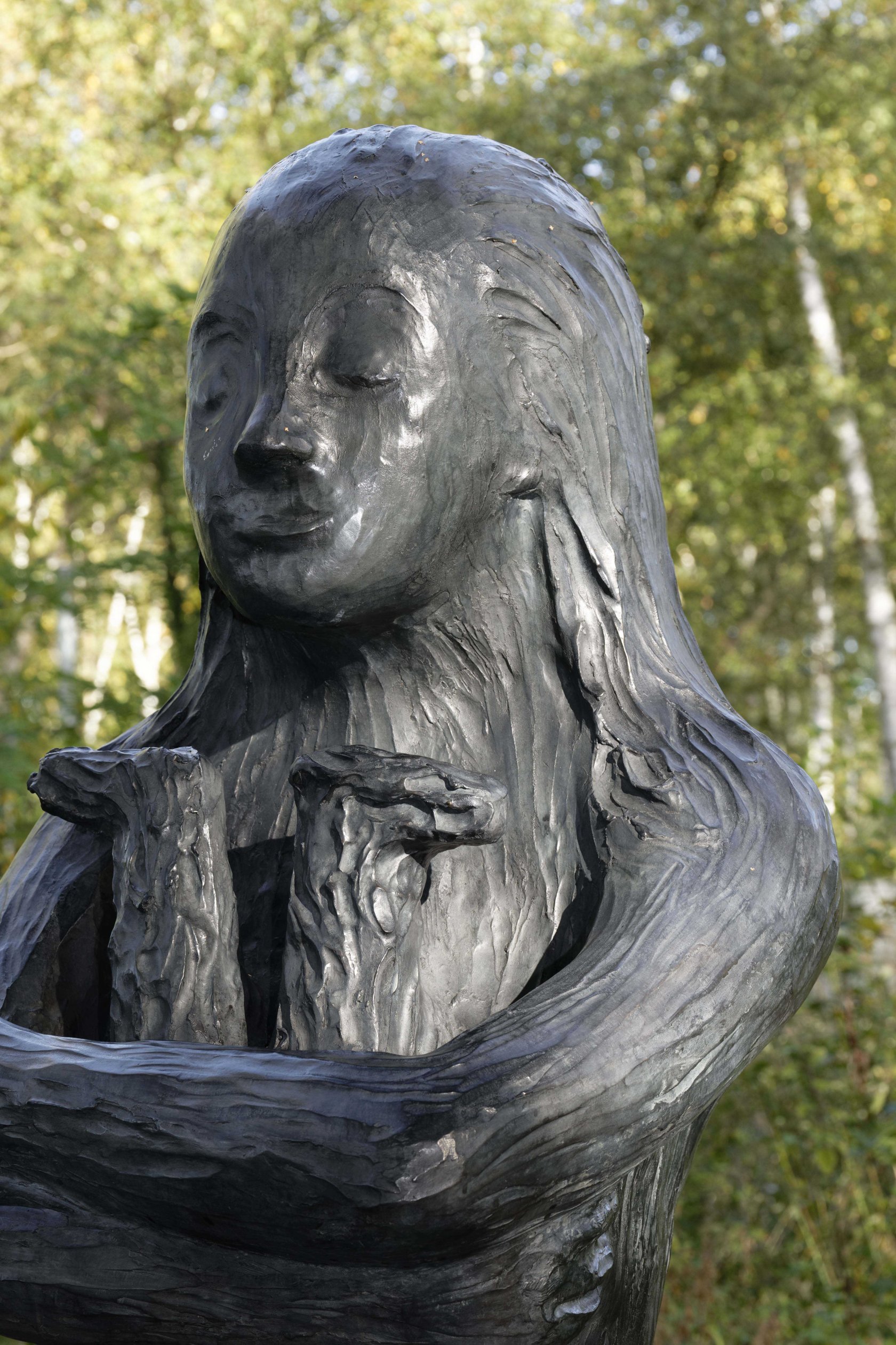Françoise Pétrovitch
Tenir
2011 - 2018
The commission
On 17 October 2011, members of various associations in Liévin discovered a slab on the Place du Trocadéro in Paris, inaugurated in 1987 by Father Joseph Wresinski and bearing the inscription: “Wherever men are condemned to live in misery, human rights are violated. We must unite to ensure that they are respected – it is a sacred duty”. Residents of the Marichelles neighbourhood in Liévin expressed their desire to see a replica of this Tribute to the Refusal of Misery installed in their area one day. To carry out this project, several associations formed a collective in December 2011 called the Comité de la Dalle. Little by little, the project has evolved. As part of the Fondation de France's New Patrons initiative, the collective decided to commission a contemporary work to pay tribute to those who constantly struggle to improve their daily living conditions. They also wanted this work to be installed in a symbolic place: the park of the Louvre-Lens. Marie Lavandier, director of the Louvre-Lens, and her team are very attached to the museum's relationship with local audiences and welcomed the idea enthusiastically, helping to bring the project to fruition.
The artwork
In response to the brief, Françoise Pétrovitch suggested creating a monumental bronze sculpture of allegorical significance. It represents a young woman clutching a small, upside-down figure. Her attitude evokes determination, solidarity and resistance. The sculpture was unveiled to the public on 17 October 2018, on the occasion of the International Day for the Eradication of Poverty. The vision that Françoise Pétrovitch offers with this sculpture is not one of anger, nor a miserabilistic vision seeking to arouse pity. The artist pays tribute to the silent, often solitary strength of people who have fought or are still fighting against poverty. She also reminds us very simply, by choosing a banal scene, of the daily and permanent reality of this struggle. The artist's choices in terms of dimensions, materials and the positioning of the sculpture on a pedestal situate her response within the history of public monuments, whose conventions she adopts. It thus offers the commissioning group a rare and remarkable example of a citizen's monument.
The artist
Born in 1964 in Chambéry, Françoise Pétrovitch lives in Cachan and teaches at the École Estienne, a national school of communication and book design in Paris. Since the 1990s, Françoise Pétrovitch has created a singular and powerful body of work through a variety of media: drawing, painting, sculpture, video, engraving and ceramics. Playing with formats and a constantly evolving body of work, Françoise Pétrovitch reveals an ambiguous, silent and often disturbing world, playing with conventional boundaries and going beyond temporal categories. The intimate and the collective, the everyday and the universal, animals and human beings, childhood and adolescence mingle, exploring notions of absence, fragment and disappearance.





Commissioners: members of the Comité de la Dalle (MRAP - Movement against Racism and for Friendship between Peoples, the League of Human Rights, Souchez-Solidarité Partage, ATD Quart-Monde, JOC - Jeunesse Ouvrière Chrétienne and the Raoul-Follereau Foundation)
Artist(s): www.francoisepetrovitch.com
Place: Park of the Louvre-Lens Museum, Lens
Partners: Fondation de France, Louvre Museum, City of Liévin, Lens-Liévin District Council, Pas-de-Calais Department, Hauts-de-France Region and Daniel and Nina Carasso Foundation
Where to access the work? Museum park, open every day, including Tuesdays: from 16 April to 31 October from 7am to 9pm and from 1 November to 15 April from 8am to 7pm. Access to the park is free for all.
